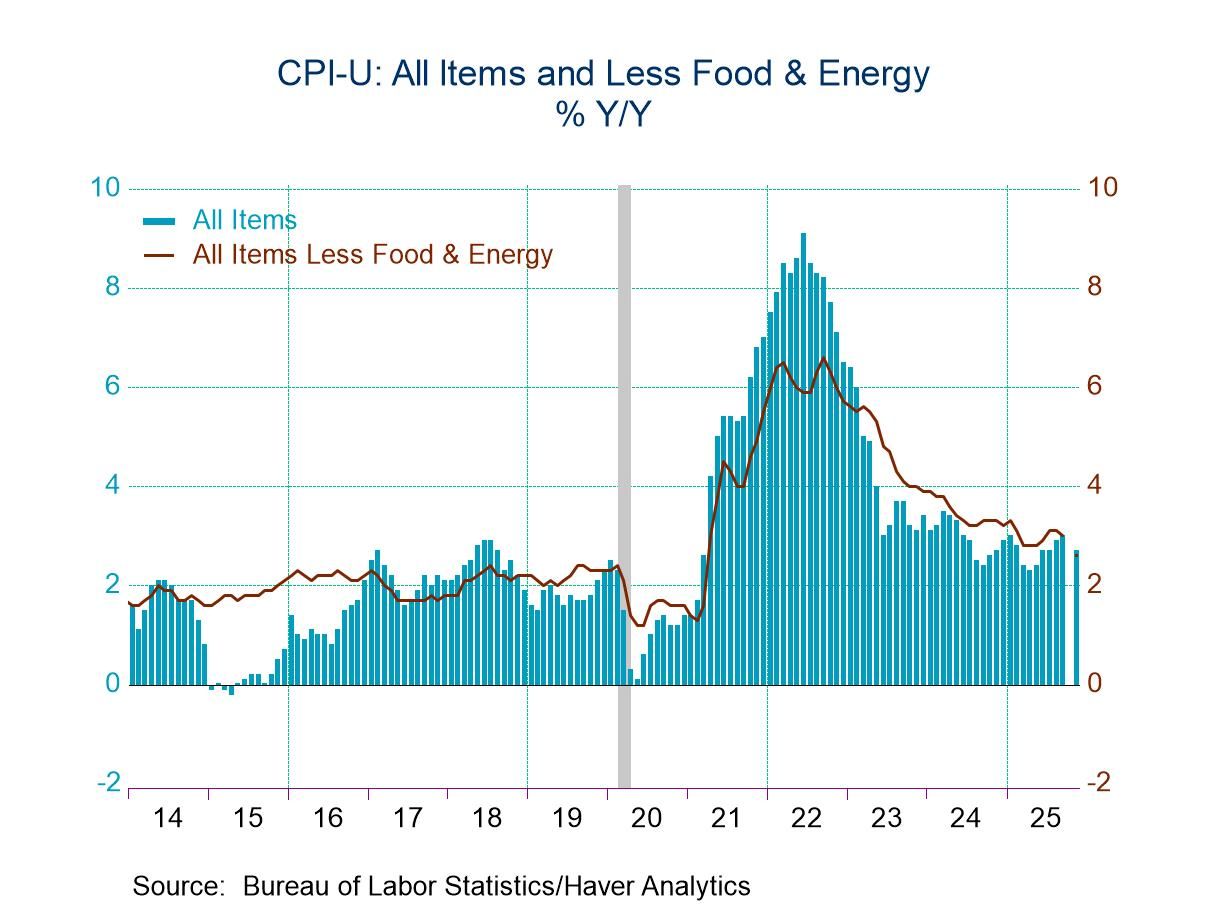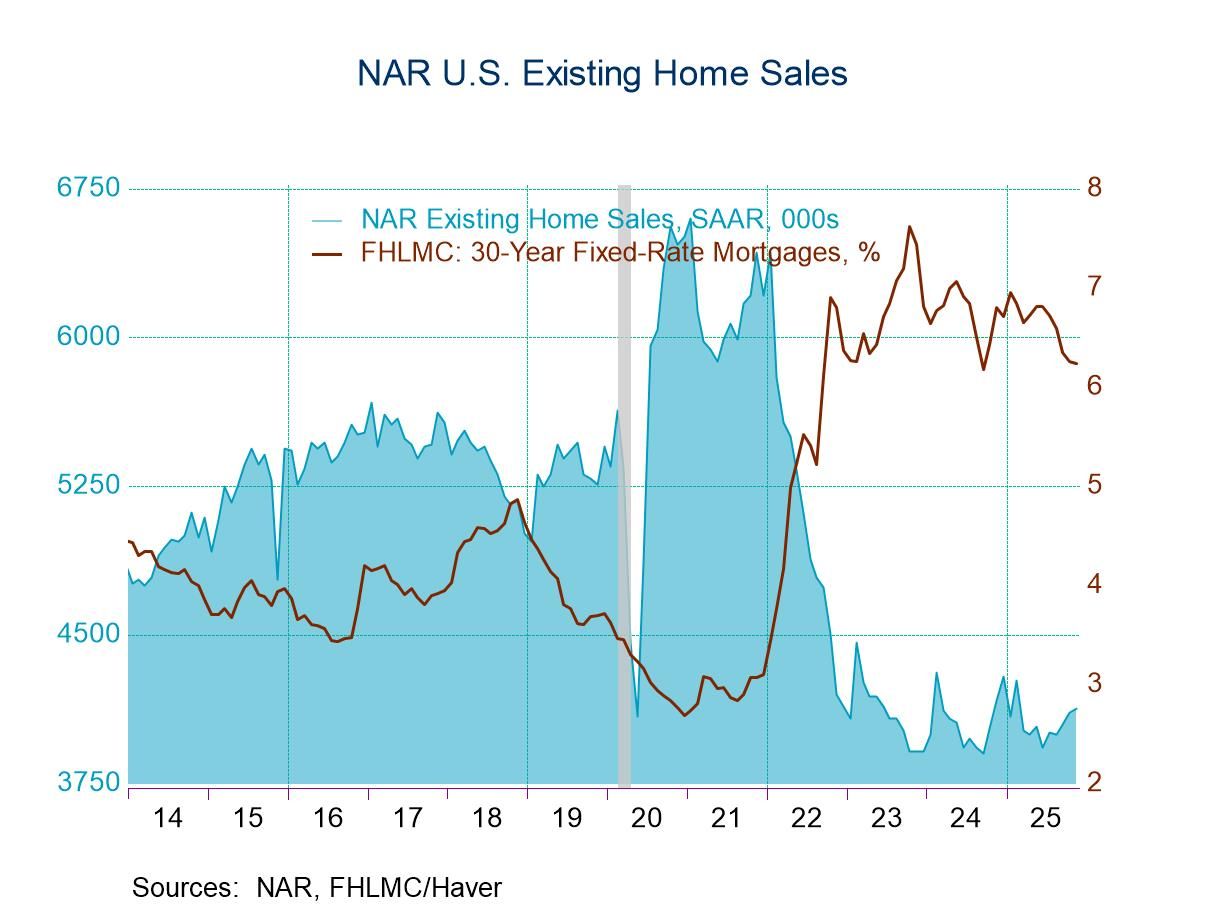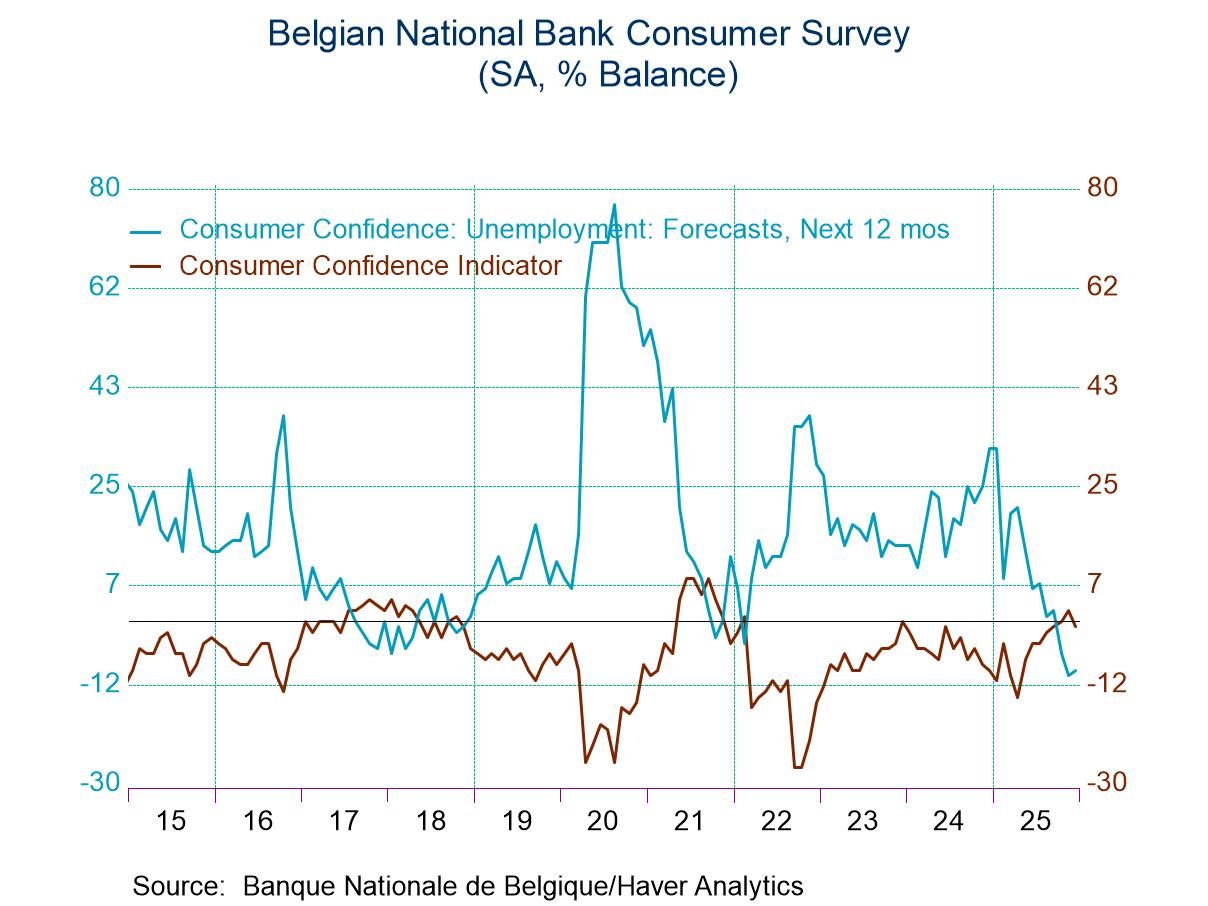German Orders: What Turns Up…Must Turn Down

German orders turned sharply lower in July, falling by 11.7% month-to-month after rising strongly by 7.6% in June and by 6.2% in May. The sharp decline in July still does not turn the three-month growth rate negative. However, it sharply blunts what had been an incipient upturn and severely recasts the outlook for German manufacturing which for the past few months was seeming to have inexplicably brightened, whereas now it appears that May and June may have simply been a couple of rogue months of strength in an ongoing period of weakness.
Foreign vs. domestic trends Foreign orders in Germany fell by 12.9% in July after rising 11.9% in June and 6.8% in May. That series still carries a positive 17.5% annual rate of growth over three months. Domestic orders fell by 9.7% month-to-month in July after gaining 1.5% in June and 5.3% in May. For domestic orders, the three-month growth rate is a clear negative growth rate of 13.1%, at an annual rate. Over three months domestic and foreign orders are each moving rapidly and in opposite directions – that won’t last.
Sequential trends Sequential growth for German orders shows negative growth rates over 12 months and six months with those headline declines interrupted by a +3.8% annual growth rate over three months. That 3.8% gain is looking less authentic. It is out of context sequentially and strongly blunted in backtracking in monthly data. Foreign orders post a -11.1% annual rate over 12 months and a -12.5% annual rate over six months but grow at a strong +17.5% annual rate over three months. However, that three month-growth rate is severely crimped by the sharp downturn in July; it's extremely hard to understand what trend is really in play here for foreign orders in Germany. German domestic orders fall 9.8% over 12 months, followed by a 9.5% annual rate decline over six months, in turn, followed by a 13.1% annual rate drop over three months. The negative growth rates for domestic orders are persistent.
Quarter-to-date (QTD) orders In the quarter-to-date, because of the severe weakness in July, which starts the new quarter, we are looking at negative growth rates of 23% to 36% for total orders, foreign orders, and domestic orders in the newly started third quarter.
Real sales by sector Real sector sales for Germany show declines in July as sector sales in all the categories in June as well as in July; that compares to increases in all the categories but one in May. Even so, real sector sales growth in manufacturing is up by 1.4% over 12 months, flat over six months, and up at a 4.1% annual rate over three months. Consumer goods show negative growth rates over 12 months, six months, and three months. Capital goods show positive growth rates of 7.9% over 12 months, 2.3% over six months, and at a 12.1% annual rate over three months, demonstrating consistent growth and even acceleration on the three-month horizon. Capital goods manage to do this with the two most recent months showing significant drops in real sales- that undermines the trend. Intermediate goods show sales falling by 5.2% over 12 months, falling at a 1.4% annual rate over six months, and falling at a 3.3% annual rate over three months. Overall, the sales numbers generate positive gains over three months, but the sequential growth rates are not compelling – nor is the sector detail.
QTD trends broadly weak In the quarter-to-date calculus for the first month in the new quarter, there are negative growth rates across the board for all the categories of sales: headline sales, and manufacturing sales, both fall at a 4.6% annual rate. In the new quarter, the deepest decline is from consumer durables at a -20.9% annual rate.
EU Commission indexes show euro-weakness The EU Commission industrial confidence reading for Germany, France, Italy, and Spain shows negative readings for all four of those countries in July as well as in June and May. There is no hint of the German mid-year strength in orders. The industrial monthly changes on these metrics in June show deterioration for all countries on all horizons except for France; it registers a slightly less negative number in June compared to May, but then the French industrial metric posts a large negative reading for July. The industrial indexes in Germany, France, Italy, and Spain show worsening from 12-months to six-months to three-months for all four countries. The current queue standings for the industrial confidence measures for the four countries show the strongest readings for Italy and Spain with queue percentile standings in the lower 30th percentiles. Germany, and France post even weaker queue percentile standings in their 26th to 27th percentiles. All of these are weak readings.
Since Covid struck... Taking a longer perspective, looking at all the variables in the table compared to where they were in January 2020, before COVID struck, everything is weaker than its January 2020 level except for capital goods shipments; they are stronger by 4.2%. Total orders are lower by 8.4%, real sector sales and manufacturing are lower by 1.8%, and the EU industrial confidence indexes are lower by 1 to 2½ points in Germany and Italy and lower by about eight points in France and lower by 12.6 points in Spain.

Summing up In summary, German orders look to be reversing an incipient rebound that was underway in the May and June period. Real sales across sectors never really showed very much strength; with the singular exception of capital goods where sales continue to show some strength sequentially but have nonetheless posted negative sales numbers in both June and July. Industrial confidence measures show that for the large economies in the European Monetary Union slippage to greater weakness has been the rule and continues to be the trend in recent months. The brief flirtation with some strength in Germany in May and June, now appears to have been a statistical artifact that is not going to have any legs going forward.
Robert Brusca
AuthorMore in Author Profile »Robert A. Brusca is Chief Economist of Fact and Opinion Economics, a consulting firm he founded in Manhattan. He has been an economist on Wall Street for over 25 years. He has visited central banking and large institutional clients in over 30 countries in his career as an economist. Mr. Brusca was a Divisional Research Chief at the Federal Reserve Bank of NY (Chief of the International Financial markets Division), a Fed Watcher at Irving Trust and Chief Economist at Nikko Securities International. He is widely quoted and appears in various media. Mr. Brusca holds an MA and Ph.D. in economics from Michigan State University and a BA in Economics from the University of Michigan. His research pursues his strong interests in non aligned policy economics as well as international economics. FAO Economics’ research targets investors to assist them in making better investment decisions in stocks, bonds and in a variety of international assets. The company does not manage money and has no conflicts in giving economic advice.






